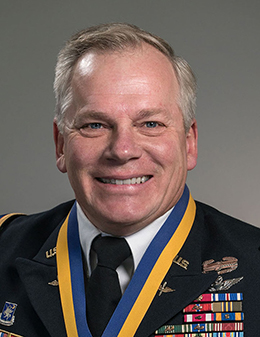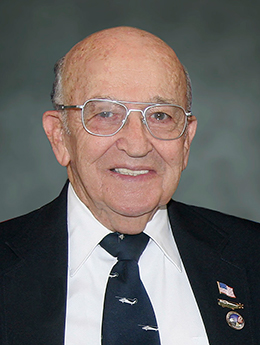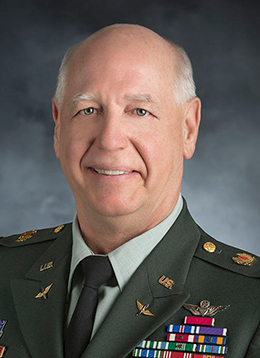2018 Hall of Fame Inductees
CW4 Gerold D. Brown, Ret. ~ CW4 William L. Ruf (Deceased) ~ CW5 Paul L. Price
 Chief Warrant Officer Four Gerold Dean Brown, U.S. Army Retired
Chief Warrant Officer Four Gerold Dean Brown, U.S. Army Retired
CW4 Gerold D. (Dean) Brown, has flown almost 10,000 hours flight hours, 5,100 under Night Vision Goggles as a Special Operations Pilot and now Civilian Mission Flight Instructor with the 160th Special Operations Aviation Regiment (Airborne).
No aviator in all of the 160th SOAR(A) has made more contributions, tackled more responsibilities, and achieved a higher level of excellence than Dean Brown has. As a soldier, officer, aviator, and a Special Operations warrior, standardization officer, flight lead, and instructor pilot, CW4(R) Brown has demonstrated professionalism, unwavering mission-focus, and superior tactical and technical competence in some of our nation’s most classified missions.
Entering the Army in 1982 and participating in several Classified Operations, he served as a flight engineer on the “Super D” MH-47D AWC (All Weather Cockpit) and was selected as one of the first crewmembers sent to flight school to become a Special Operations Aviator in 1989.
CW4 Brown led more than 125 SOF combat missions around the world and was the overall flight lead for the longest helicopter air assault in U.S. military history logging over 14 hours covering a distance over 1,400 nautical miles with four in-flight air refuel events. He also led the longest hostage rescue mission in U.S. history with over 15.5 hours of flight time while rescuing eight missionaries in Afghanistan.
He retired in 2005 and has trained and mentored more than a thousand aviators. His impact on Army Aviation cannot be overstated.
 Chief Warrant Officer Four William “Willie” L. Ruf, Deceased
Chief Warrant Officer Four William “Willie” L. Ruf, Deceased
A product of our nation’s “Greatest Generation,” CW4 (Ret.) Willie Ruf dedicated his life in the service of our country and contributed directly to the heritage of Army Aviation. He began military service in 1941, enlisting in the Army as an Infantryman. By the age of 22, he had risen to the rank of regimental sergeant major after serving 34-months in the Pacific.
His aviation career began in 1955 as the first warrant officer candidate to graduate from flight school at Fort Rucker, AL. He flew in excess of 16,000-hours, of which 1,200 hours were flown in combat in Korea, Vietnam, Lebanon and the Dominican Republic. In 1958, he was selected for assignment to the newly activated Presidential Flight Detachment. During this assignment, he flew Presidents Eisenhower, Kennedy, Johnson and Nixon. He also became the first pilot to fly a Presidential helicopter outside the continental United States during President Eisenhower’s 1959 world tour.
Upon retiring from active duty, CW4 Ruf continued his career as a civil service instructor pilot, retiring in 1993 with 52-years of total federal service. Always wanting to contribute more, he remained active as a civic volunteer and a tour guide for the Army Aviation Museum. He also served as the principle instructor for all Aviation Branch history classes, instilling in the next generation of Army Aviators their heritage and traditions.
As a pioneer, CW4 Ruf’s contributions are inextricably woven into the very fabric of Army Aviation and his legacy will live on forever.

Chief Warrant Officer Five Paul Loree Price, U.S. Army Retired
CW5 Paul Price entered the Army in 1974 and served as a crew chief with the 101st Aviation Group. Following a Black Hawk qualification he was immersed in training to rescue hostages held in Iran. Upon the hostages’ release, he was permanently assigned to the newly formed TF 160 as a special operations aviator.
CW5 Price was instrumental in the devolvement of emerging air tactics, and responsible for developing and honing skills using night vision goggles, perfecting what would become the standard + 30 seconds time on target. In October 1983 these skills allowed TF160 to insert Special Operations Forces to rescue Americans held in Grenada.
In 1985 he was selected by a Special Mission Unit as a rotary/fixed wing instructor and standardization pilot, planner, maintenance / research and development officer and troop commander. Much of this work remains classified, but his efforts were directly instrumental in the capture of our nation’s most wanted enemies.
In 1997 he deployed to Bosnia and flew operations to capture war criminals charged with crimes against humanity.
Following 9-11, he executed advanced force operations around the world in support of the SOF mission including long range insertions, direct action, reconnaissance, and target snatches.
A Master Army Aviator, he logged more than 11,100 hours, including 800 combat hours in some 30 different airframes. He retired from the Army and continues serving as a Department of Army Civilian working at Night Vision and Electronic Sensor Directorate, Ft. Belvoir, VA. Paul volunteered and deployed as a DAC aviator to Iraq and Afghanistan ISO counter IED find and destroy operations. Many of the mission equipment packages and night vision systems used today were developed and tested by Paul Price.
Hall of Fame History